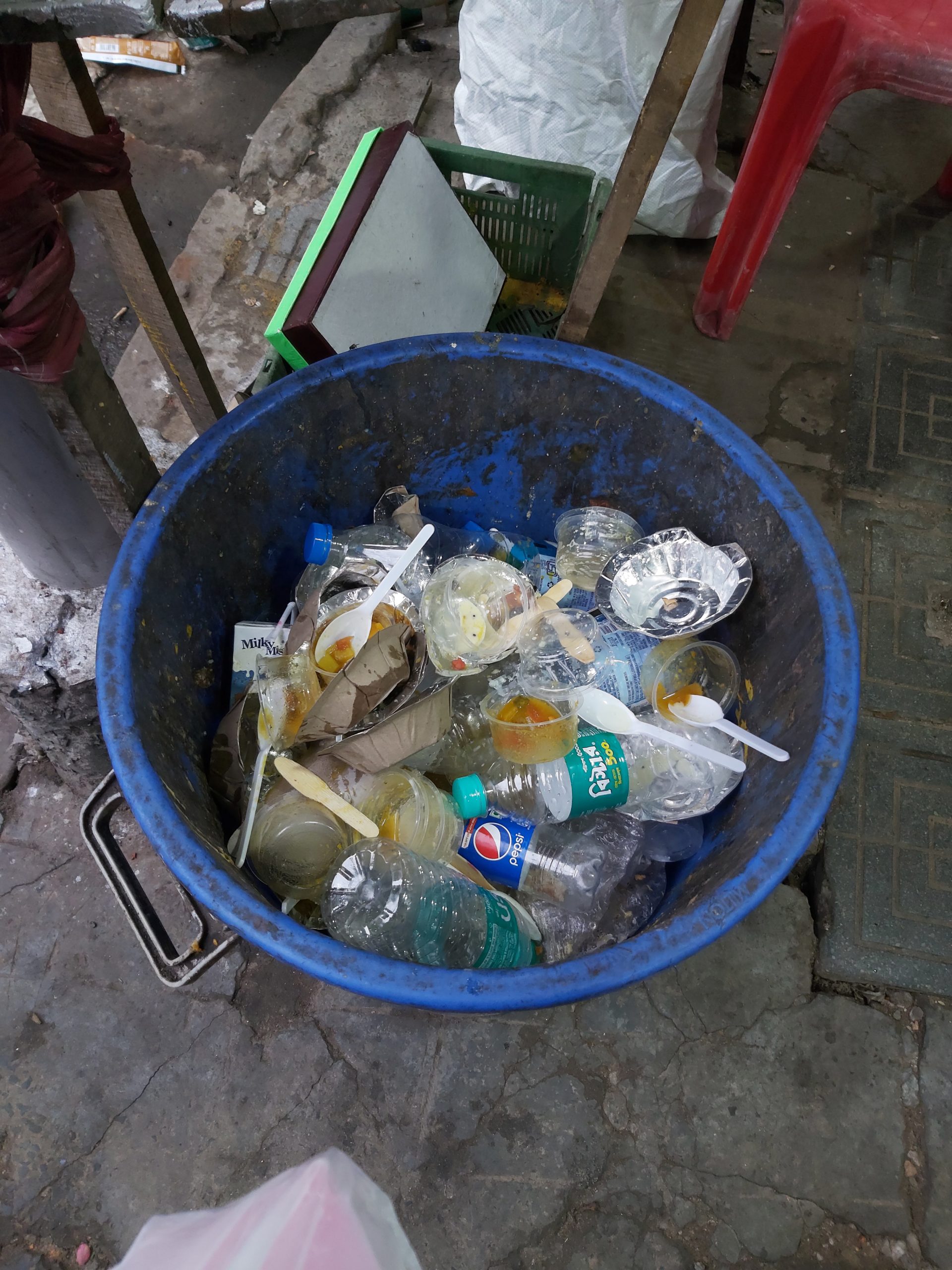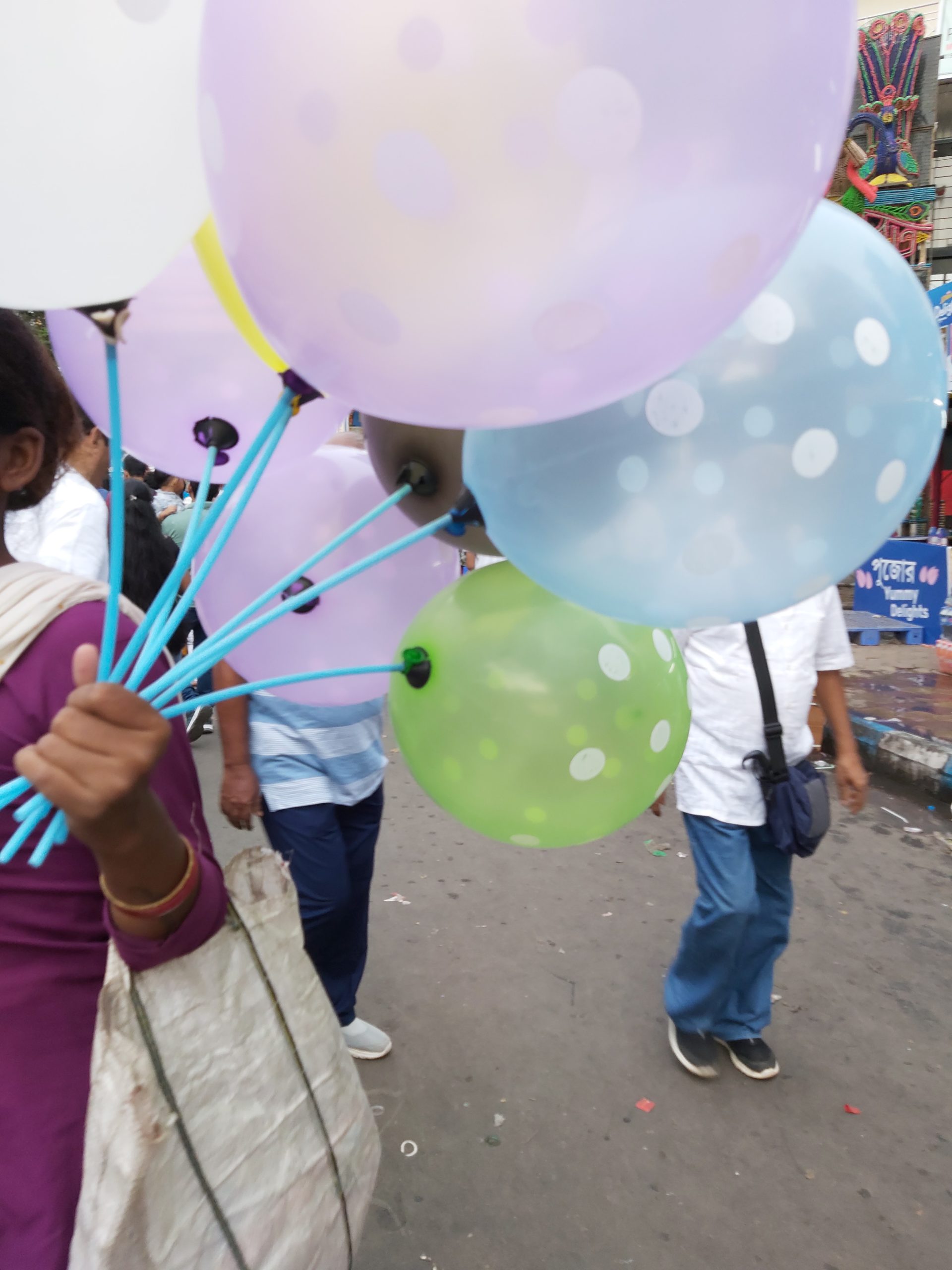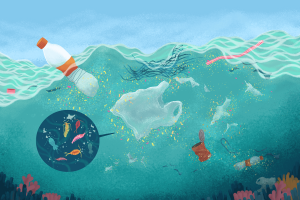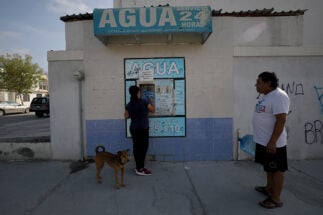Every year as the seasons start to change, pandals appear all over Kolkata. Many organising committees for the Durga Puja, the biggest annual festival in West Bengal, pick topical themes to decorate these temporary structures, which display idols of the goddess Durga and her ‘children’. ‘Pollution’ and ‘How we are destroying the planet’ are popular subjects that have been used by organisers in the last few years to raise awareness of environmental problems and climate change.
This year, the organisers of one of the biggest pandals in the city chose ‘Plastic and Marine Pollution’ as their theme. The pandal highlighted how plastic waste, especially polythene bags, is harming marine animals. The message was loud and clear. But can awareness alone change people’s behaviour? A visit to the Puja pandals in the neighbourhood quickly dispelled this notion. The streets were thronged with food stalls dispensing single-use plastic items like spoons, straws and plates for ice cream, juices and other snacks. Children were tempted by balloons attached to plastic sticks and adults were enticed by plastic decorations.

India generated around 34.7 lakh (3.47 million) tonnes of plastic waste in 2019 and 2020, according to the Central Pollution Control Board. Over the past five years, per capita plastic waste generation has almost doubled. According to a 2018 report by New Delhi-based think tank The Energy and Resources Institute, around 43% of plastics manufactured in India are used for packaging, most of which is single-use, meaning it enters the waste system after one use. About 60% of plastic waste gets recycled in the country, with the remainder burned or buried in landfill.
On 1 July this year, India took a step towards addressing the growing problem of plastic waste by banning 19 single-use plastic items including spoons, straws, plates and polythene bags. Bags that are less than 75 microns thick had been banned since 30 September 2021, but the new ban prohibits bags that are less than 120 microns thick, in effect from 31 December 2022. India’s single-use plastic ban was hailed around the globe as a major step by a developing country to combat plastic pollution.
Plastic bans fail without enforcement
Most Indian environmentalists praised the nationwide ban, but knew that the real test would come months later. And, four months into the ban, the streets of Kolkata make it amply clear that there is a long way to go before the legislation is effective on the ground. It would be a mistake to think this is unique to the ‘City of Joy’; the situation is similar across the country.
In September, I saw a similar situation in Delhi and then in Shillong. Banned plastic items were freely available in the markets, or given away in takeaway deliveries. Vegetables were sold in thin polythene bags; the local sugarcane juice and coconut water vendors provided plastic straws; and many restaurants were using plastic cutlery: back to business as usual. In other parts of the country as well, the banned items are freely available and are being used openly. So, where did we go wrong?


Most of these large cities were off to a strong start when India’s single-use plastic ban came into effect in July. Public events were organised and massive awareness campaigns were launched. There were efforts to showcase alternatives to plastic and promote the manufacturing of such products among businesses.
There was also a push to enforce the ban. Regulatory agencies in many states reported conducting spot-checks for the banned single-use plastics, and strict action was taken against violators, especially manufacturers. For example:
- In Mumbai, the Brihanmumbai Municipal Corporation seized 225 kg of plastic and levied a fine of INR 2.85 lakh (about USD 3,460) in the first two weeks of the ban;
- In a meeting organised by Toxics Link in July 2022, K S Jayachandran, member secretary of the Delhi Pollution Control Committee, shared that within the first 15 days of the ban, local authorities in Delhi seized around 21 tonnes of banned plastic items and collected fines totalling INR 1.38 crore (about USD 167,490)
- In Bangalore, the Bruhat Bengaluru Mahanagara Palike local authority confiscated nearly 700 kg of single-use plastics between 1 July and 3 July, and issued a fine of INR 2 lakh (USD 2,430)
- In the first month of the ban, Gurgaon municipality issued 886 challans (an official invoice or receipt) for violations to the tune of INR 6.19 lakh (USD 7,520) for the use of banned items. It seized 1,538.5 kg of banned plastic over the same period.
The struggle to swap out single-use plastics
The situation, though, was not the same everywhere. From the very beginning in India’s smaller towns and cities, the plastic ban scarcely made an impact. In my conversations with small businesses, I was told they had not been consulted before the ban and that consumers were still demanding the banned items, especially plastic bags and cutlery. With alternatives usually more expensive and often unavailable, vendors were not willing to incur additional costs or lose customers, and chose to continue to use single-use plastics.
And frankly, big brands and large corporations have also not shown much willingness to change. In the last few years, policies such as those on e-waste management in 2016 or Extended Producers Responsibility for plastic packaging this year, have been brought in suddenly, with little advance warning. But the single-use plastic ban was different. Prime Minister Narendra Modi committed to eliminating single-use plastics in 2019, and the list of items was notified in 2020.
Prime Minister Narendra Modi committed to eliminating single-use plastics in 2019, and the list of items was notified in 2020
Corporations, industries and consumers all had time to prepare for the ban. And yet, when the ban came into force this year, corporate giants including Parle Agro, one of the nation’s largest beverage makers; Amul, India’s biggest dairy group; and multinational consumer goods company Dabur India sought more time to replace the plastic straws that come attached to the packaging of their beverages.
According to industry statements, India’s beverage manufacturers use approximately 6 billion straws every year, and there is almost zero domestic manufacturing capacity for paper straws. Until now, plastic-free options have been produced in limited quantities due to limited demand. In the absence of demand for high volumes of these alternatives, the cost is comparatively much higher – something brands are not willing to absorb or pass on to consumers at the fear of losing business. It is difficult to understand why companies did not anticipate these market dynamics earlier, or why they did not consider redesigning products to eliminate unnecessary straws altogether.
Success depends on all stakeholders getting behind a ban
The problem lies in the lack of willingness of corporations to invest in research and development to find non-plastic alternatives or eliminate usage of certain plastics; of small vendors to find and adopt alternatives; of consumers to reflect awareness in their behaviour and stop asking for and using single-use plastics; and most importantly, of regulatory agencies to develop a sustained enforcement plan.
Lessons from earlier state-wide bans on plastic bags in India are crystal clear: any major change like this requires a sustained effort from all stakeholders and a lot of government support in enforcement, as well as system change. Unfortunately, India’s single-use plastics ban lacks these. Based on what I have seen and heard, spot-checks and seizures of banned items are slowing down, and no incentives are being offered to manufacturers of alternatives. This gives little momentum to the ban and is resulting in widespread violations.
Just four months into India’s single-use plastics ban, it is still early days. If there is collective will, there can surely be a turnaround. Whether anybody is willing to take the lead is the million-dollar question.
Images in this article may not be reproduced without permission.









